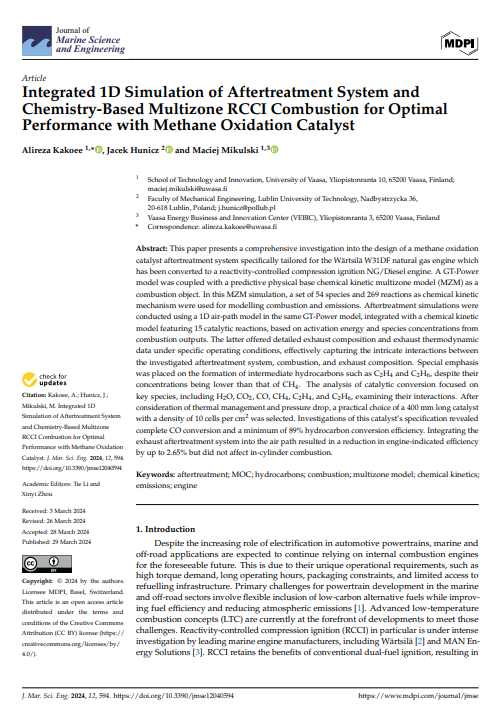This paper presents a comprehensive investigation into the design of a methane oxidation catalyst aftertreatment system specifically tailored for the Wärtsilä W31DF natural gas engine which has been converted to reactivity-controlled compression ignition NG/Diesel engine. A GT-Power model was coupled with a predictive physical base chemical kinetic multizone model (MZM) as combustion object. In this MZM simulation a set of 54 species and 269 reactions chemical kinetic mechanism has been used for modeling combustion and emissions. Aftertreatment simulations were conducted using a 1D air-path model in same GT-Power model, integrated with a chemical kinetic model featuring 15 catalytic reactions, based on activation energy and species concentrations from combustion outputs. The latter offered detailed exhaust composition and exhaust thermodynamic data under specific operating conditions, effectively capturing the intricate interactions between the investigated aftertreatment system, combustion, and exhaust composition. Special emphasis was placed on the formation of intermediate hydrocarbons such as C2H4 and C2H6, despite their concentrations being lower than that of CH4. The analysis of catalytic conversion focused on key species, including H2O, CO2, CO, CH4, C2H4, and C2H6, examining their interactions. After consideration of thermal management and pressure drop, a practical choice of a 400 mm-long catalyst with a density of 10 cells per cm2 was selected. Investigations of this catalyst specification revealed complete CO conversion and minimum 89% hydrocarbon conversion efficiency. Integrating the exhaust aftertreatment system into the air-path resulted in a reduction in engine indicated efficiency up to 2.65%, but did not affect in-cylinder combustion.




















